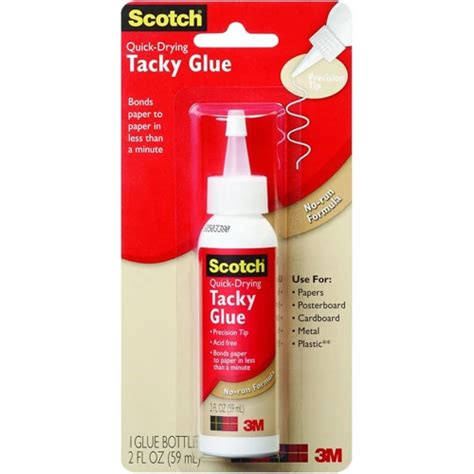Discover the Secret to Faster Tacky Glue Drying
Tacky glue, a crafting staple for generations, offers a strong bond and ease of use. However, its notoriously slow drying time can be frustrating. Waiting for projects to set can significantly impact productivity and workflow. This comprehensive guide explores the science behind tacky glue drying and reveals effective strategies to accelerate the process, helping you complete your crafting projects faster and more efficiently.
Why Does Tacky Glue Take So Long to Dry?
Tacky glue, also known as white glue or school glue, is a water-based adhesive. Its drying mechanism relies on the evaporation of water, a process significantly influenced by environmental factors like temperature, humidity, and airflow. The thicker the glue application, the longer it takes to dry because more water needs to evaporate. Furthermore, the porous nature of the material being glued also plays a role; porous materials absorb the water, slowing down the drying process even further.
How to Speed Up Tacky Glue Drying: Proven Techniques
Several methods can effectively reduce tacky glue's drying time. Here are some tried-and-true techniques:
1. Thinning the Glue
Applying a thinner layer of glue significantly reduces drying time. This is because less water needs to evaporate. While it may seem counterintuitive, a thinner layer often provides sufficient adhesion, especially for smaller projects. For larger projects or materials requiring a stronger bond, consider multiple thin coats instead of one thick layer. Allow each coat to dry slightly before applying the next.
2. Increasing Air Circulation
Good airflow is crucial for faster evaporation. Using a fan to gently circulate air around your project can considerably speed up the drying process. This method is particularly helpful in humid environments where evaporation is naturally slower. Avoid using a high-powered fan that might dislodge delicate materials.
3. Utilizing Heat
Heat accelerates the evaporation process. A low setting on a hairdryer (avoiding direct heat on the glue) or placing the project in a warm, well-ventilated area can be effective. Never use excessive heat, as this can damage delicate materials or cause the glue to become brittle.
4. Reducing Humidity
High humidity inhibits evaporation. If possible, work in a dry environment with low humidity. Using a dehumidifier in your workspace can be particularly helpful during humid seasons.
5. Choosing the Right Glue
While less common than standard tacky glue, some crafting glues are formulated to dry faster. These often include PVA glues with modified formulations that enhance drying times. Check the product label for information on drying time.
Frequently Asked Questions (FAQs)
Here are answers to some common questions about accelerating tacky glue drying:
Can I use a heat gun to dry tacky glue faster?
While a heat gun can drastically reduce drying time, it poses a significant risk of damaging your project or causing fire hazards due to the highly flammable nature of the glue. Avoid using a heat gun unless you are an experienced crafter fully aware of the risks involved. Using a hair dryer on a low setting is a much safer alternative.
What's the best way to dry tacky glue on paper?
For paper projects, the combination of thin glue application, good airflow (a fan), and potentially a slightly warm environment works best. Avoid excessive heat, as it can warp or damage the paper.
Why is my tacky glue still wet after several hours?
This issue often arises from excessively thick glue application, high humidity, or a lack of airflow. Try thinning the glue next time, increasing air circulation, and working in a drier environment.
How can I clean up tacky glue spills quickly?
Fresh spills can be cleaned up with a damp cloth or sponge. Allow excess glue to dry completely before scrubbing stubborn residue, which might require a stronger cleaning solution.
Does the type of material affect drying time?
Yes, porous materials absorb water from the glue, significantly prolonging drying time. Non-porous materials will dry faster.
By understanding the factors influencing tacky glue's drying time and employing these strategies, you can significantly accelerate the process and improve your crafting efficiency. Remember to prioritize safety and always test methods on a small area before applying them to your entire project. Happy crafting!

